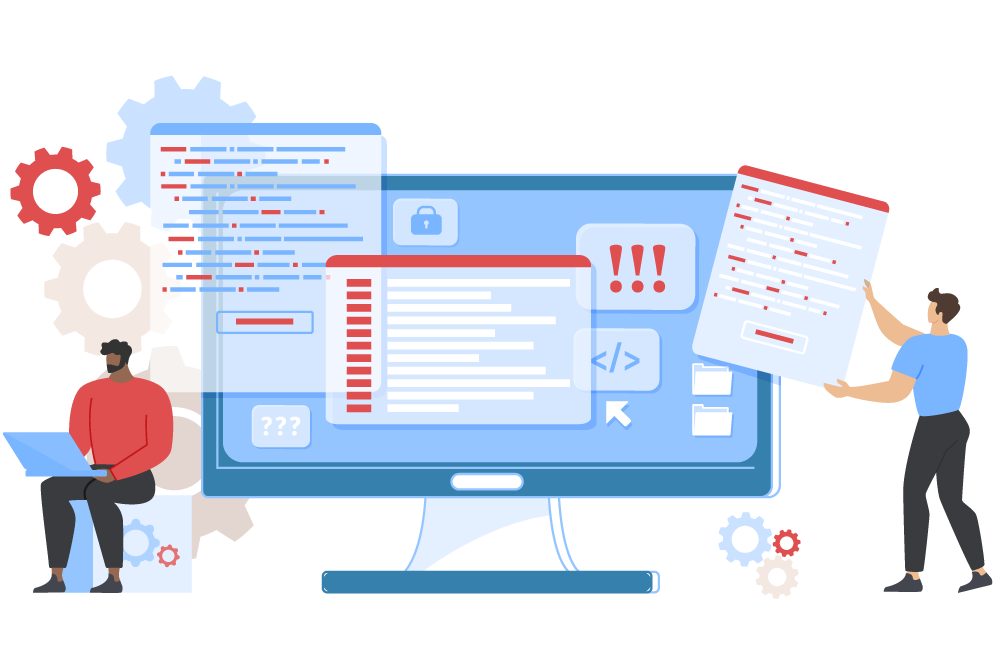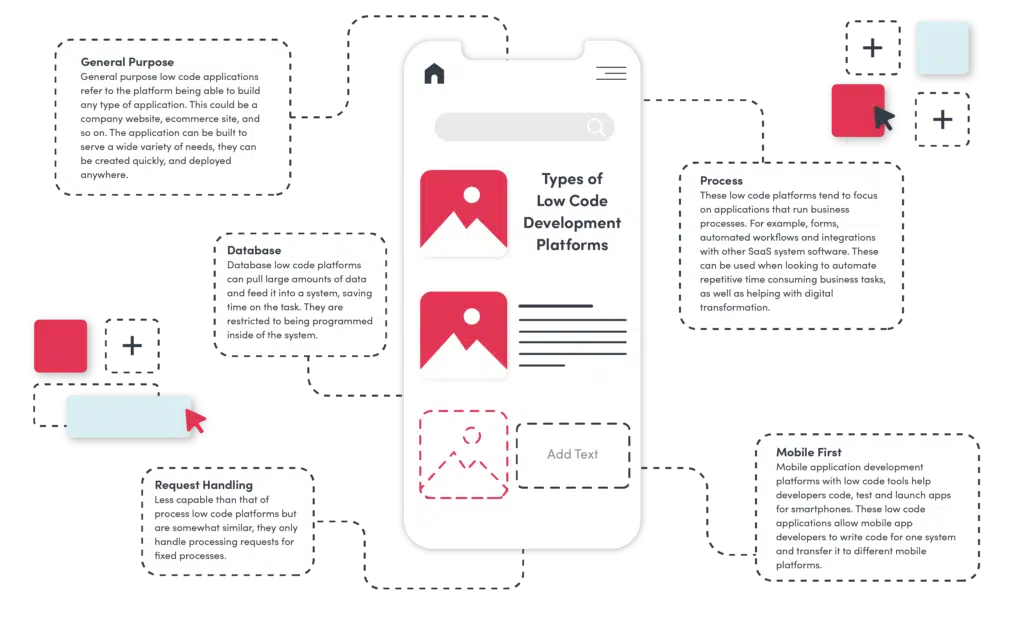Great Facts On Picking Low-Code Platform Examples
Wiki Article
The Accessibility Of Low-Code Applications Is One Of The Main Benefits.
Due to a range of important factors, Low-Code Application Development is a possibility for non-developers. They are also known as "citizen designers."
Drag-and-drop Builders: Lowcode platforms include drag-anddrop interfaces to enable non-developers to create visually appealing applications without the need for codes. This makes development easier for those with little or no technical skills.
WYSIWYG: WYSIWYG editors are "What you See is What you get" editors that let users to design workflows and interfaces that are similar as the final product. This makes it simpler to use and understand.
Simplified Workflow and Logic Design:
Visual Workflow Design: Users can easily design business process and application logic by using flowcharts, models and diagrams. They are much easier to implement than traditional coding.
Logical Components Pre-built: Many low-code programs come with pre-built components for logic (e.g. conditions, loops) and can be easily set up. This eliminates the necessity to write complicated programs.
Reusable Components & Templates
Template libraries that are pre-built: A lot of low-code platforms offer a library for the most common kinds of software, giving non-developers to have a foundation to build on and later customize.
Reusable Widgets And Modules: Users can use reused widgets. This makes it easier to create and reduces the need of extensive knowledge.
Guided Development and Tutorials
Step-by-step guide Platforms offer tutorials, tips on screen, and development guides to assist non-developers in creating applications.
Interactive Tutorials. Interactive, hands on tutorials allow users to learn by doing.
Integration with Tools Already in Use:
seamless integration: Low-code platforms are designed to seamlessly integrate with the existing business tools, systems, and software (e.g., ERP or CRM, ERP). This enables non-developers with no prior experience in programming to design applications that are compatible seamlessly with their current workflows.
APIs and Connectors APIs built-in and connectors ease the integration process and allow developers to connect their applications to external services without the need for complicated coding.
Collaboration Features:
Team Collaboration: Features such as real-time collaboration, as well as shared workspaces allow non-developers to work with business analysts, professional developers and other stakeholder groups effectively.
Role Based Access Control: You can give non-developers certain roles that have the right access level so that they are able to participate in the development process while not compromising on security or functionality.
Automated testing and debugging:
Test tools are included: A lot of low-code platforms include integrated debugging and testing tools. These tools automate the procedure, making it simple for non-developers to make sure their apps are functioning properly.
Error Highlighting When errors occur, the platform highlights these and offers possible solutions. It helps non-developers in troubleshooting.
The main benefit of low-code application development for accessibility for non-developers is in its ability to democratize the development process. Low-code platforms offer intuitive, visual tools, guided user experiences, and allow business users to actively participate in creating updates, maintaining and enhancing applications. See the top Low-code Platform for application development info for site examples including rapid action development, software for app development, database in azure, app platforms, paas service, app modernization, build a docker container, cross platform mobile dev, app platforms, stored sql procedures and more.

Low-Code Application Development Offers Numerous Benefits, Particularly In Terms Of Cost-Effectiveness.
Low-code apps offer a number of benefits, including cost efficiency. This is an appealing alternative for companies looking to optimize development budgets without compromising on quality. Below are some of the main benefits.
Less Coding Requirements: The low codes platforms remove the requirement for complex hand-coded, custom-built applications. Developers are able to save time and energy creating apps. This means less labor costs.
Reduced Developer Resources: Since low-code is faster and simpler to create, less skilled developers will be needed. This can drastically reduce the need for the cost of hiring and staffing.
More rapid time to market
Accelerated development cycle: Visual development tools and pre-built components that are provided by low-code platforms enable rapid development of applications. This allows businesses to bring their products market quicker. This may result in quicker revenue generation and better positioning in the market.
Rapid prototyping allows businesses to create prototypes and test them in a short time, which decreases the amount of time needed for the development phase. This allows them to create faster prototypes after receiving feedback from users.
Reduced Maintenance Costs
Due to their modularity and common components, applications developed on low-code platforms tend to be simpler to maintain. This can reduce the expense of maintenance and support.
Automated Updates - Many low-code platforms are capable of handling updates and patches in a way that is both secure and timely. This means there is no necessity to manually intervene.
Efficient Resource Utilization:
Contributions by Non-Developers Low-code platforms allow non-developers and users from the business sector to participate in the process of development. This democratization in development lets employees and businesses cooperate, and reduces dependence on developers who earn high salaries.
IT departments can focus on Strategic Initiatives: Instead of being bogged down by routine work IT departments are able concentrate their efforts on strategic initiatives to increase the efficiency and productivity of their departments.
Scalable Pricing Models:
Subscription-Based Pricing: Many low-code platforms offer flexible, subscription-based pricing plans that grow according to use. This allows business to align spending with actual needs and growth while avoiding large initial costs.
Pay-as-you-go Options: Some platforms provide pay-as-you-go options, ensuring that companies only pay for the resources they use that are beneficial for startups and small businesses with limited budgets.
Reduced Third-Party Software Costs:
Built-in Functionalities: Low code platforms are equipped with a wide range of built-in features and integrations, which make it less necessary to use third-party tools and software. Subscription fees and licensing charges are also reduced.
Pre-Built Integrates: By integrating popular systems and services You can save time and money by not having the need to develop custom integrations.
More ROI
Faster ROI: Businesses can achieve a higher return on investment for their applications by combining rapid development, reduced costs and speedier times to market.
Enhanced agility. Businesses are able to quickly adjust to changing market conditions and requirements of customers to ensure they are relevant. They also can capitalize on new business opportunities that arise.
Train for less:
User-Friendly Interfaces: The user-friendly interfaces and user-friendly functions of low-code platforms reduce the learning curve thereby eliminating the need for lengthy training.
Accessible Resources A lot of low-code platforms provide complete training materials, tutorials, and support for community members, thereby cutting the requirement for formal education and associated cost.
Streamlined Collaboration:
Collaboration Tools: These tools improve communication and coordination within teams, which results in more efficient process for development and reduced costs.
Unified Development Environment: A single, unified development environment helps improve workflows and reduces complexities and costs associated with managing multiple tools and platforms.
Overall, the cost-effectiveness of developing low-code applications stems in its ability to lower maintenance and development costs and speed up time to market, optimize the utilization of resources, and offer flexible pricing models. This mix of elements gives businesses substantial financial benefits and makes low-code an appealing option for businesses looking to maximize development budgets, yet still creating robust and scalable applications. Check out the recommended Enterprise application development with Low-code Platform advice for site examples including rad development, multiplatform mobile app development, cloud software applications, build a docker container, mobile app development platforms, build a docker container, rapid action development, app platforms, rapid app development, app modernisation and more.

Benefits Of Low-Code Application Development In Terms Of Community Support And Vendor Support
Low-code development platforms for applications have substantial advantages in terms of vendor support and community, which are essential for successful implementation, ongoing maintenance, and continual development of the applications. Support from the Vendor
Comprehensive Technical Support:
Support Teams with Dedicated Support: Many low-code software platforms offer access to dedicated support teams who can help with technical issues, troubleshooting, and help, making sure that issues are addressed promptly.
Support is available 24/7. A lot of vendors offer 24/7 support that can be especially beneficial for companies that operate across different time zones.
Training and Onboarding
The structured training programs offered by vendors offer structured training courses, such as webinars or courses for certification. This allows users to quickly get to grips with the platform.
Personalized Onboarding Many vendors offer customized services that help new clients implement the platform successfully and tailor it specifically to their needs.
Regular Updates & Enhancements
Continuous improvement: Low-code platform providers generally release updates regularly which contain the latest features, performance enhancements as well as security patches, making sure that their platform is cutting-edge and secure.
Feedback Integration: Many vendors integrate user feedback in their process of development. This ensures that the platform is able to adapt to the changing needs and wants of its users.
Comprehensive Documentation:
Documentation - Detailed: A comprehensive and well-organized document, ranging from basic use to advanced modifications and is usually available. This lets users solve problems independently.
API References API documentation can aid developers build and integrate apps using the Low-Code platform.
Professional Consulting Services
Expert Consultation : Vendors offer consultation services such as architecture design and complex implementations. They provide this service to ensure that users are able take full advantage of the platform.
Custom Development Services: Certain companies will provide customized development to develop functionalities or integrates for their clients that are not easily accessible.
Community Support for the Community
Active User Community:
Forums and discussion boards Forums and discussion boards: A lot of low code platforms offer vibrant online communities where users can discuss issues, share solutions and work together on best practices.
User Groups & Meetups: Local or virtual user groups and meetings provide opportunities to learn, network and sharing your experiences.
Knowledge Sharing and collaboration:
Community-Contributed Resources: Users often share templates, modules, and extensions that they have developed, which can be reused or adapted by others, accelerating development and innovation.
Crowdsourced Solutions: The collective knowledge the experience, expertise and experiences of a community can prove to be a useful tool in troubleshooting and finding creative solutions.
Learning and Development
Community-Led Training: Many communities organize training sessions, workshops, and webinars. They are often conducted by experienced users who offer practical tips as well as advanced techniques.
Tutorials and online courses Community members usually create and share online courses, tutorials and guides on how-to, improving the learning resources for all users.
Feedback and Influence
Community Forums for Product Feedback offer a variety of channels for providing feedback to vendors. This will help in the development of features.
Beta Testing Programs: Active community members might be able to be part of beta testing programs that give users early access to brand new features and an opportunity to participate in influencing the evolution of the platform.
Recognition and Encouragement
A lot of companies offer community recognition programs. These programs recognize active members of the community and also include MVP programs.
Peer support: Community members will often offer support to peers, providing their knowledge and advice to those less knowledgeable. They create a more collaborative environment by fostering cooperation and creating a positive atmosphere.
Overall the combination of strong vendor support and a vibrant, engaged community provides an extensive support system for development of low-code applications. The combination of robust vendor support and a vibrant and engaged community creates an extensive support system for low-code development.
